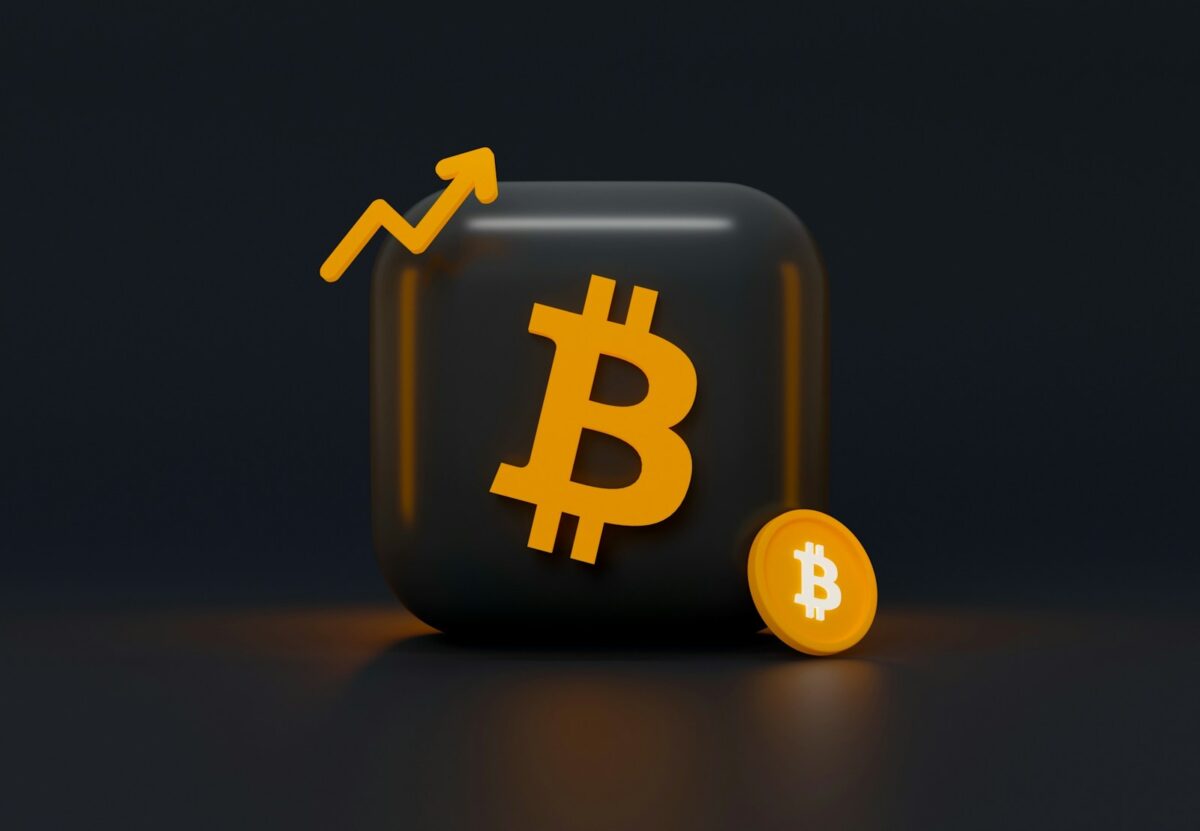
Perpetual contracts explained

Leverage plays a pivotal role in margin trading by allowing participants to control larger positions with smaller capital outlays. Unlike traditional futures, these indefinite-duration agreements do not have settlement dates, enabling continuous exposure without the need to roll over contracts. The key element maintaining price alignment between the derivative and its underlying asset is the funding rate, which incentivizes traders on opposing sides to balance demand through periodic payments.
Funding rates adjust every few hours based on the difference between the perpetual instrument’s market price and the spot price of the asset. Positive rates require long position holders to pay shorts, while negative rates reverse this flow. This mechanism prevents significant deviations by making it costly for one side to dominate, creating a self-correcting equilibrium that supports stable trading conditions.
Active engagement with these instruments demands understanding how leverage amplifies both gains and risks, as well as how funding fees impact overall profitability during extended holds. Mastery of these dynamics equips traders to design strategies that capitalize on short-term volatility or longer-term directional trends without forced expiration constraints.
Perpetual Contracts Explained
Traders seeking exposure to cryptocurrency price movements without expiry dates should focus on continuous derivative agreements that maintain position validity indefinitely. These instruments differ from traditional futures by lacking settlement deadlines, enabling market participants to hold positions as long as margin requirements and funding rates permit.
Understanding the mechanism behind these indefinite term derivatives requires analyzing how funding payments facilitate price alignment between the contract and the underlying asset. The periodic exchange of fees between long and short holders based on mark price deviations ensures convergence, preventing significant divergence from spot prices over time.
Mechanics of Continuous Derivative Instruments
These trading tools allow leverage application, often ranging from 1x up to 100x or higher depending on platform policy and asset volatility. Leverage amplifies both potential gains and losses, demanding precise risk management strategies. Margin calls occur when maintenance margin thresholds are breached, leading to automatic liquidation if additional collateral is not provided.
Funding rates–calculated at regular intervals such as every 8 hours–represent payments exchanged directly between holders of opposing positions. A positive rate means longs pay shorts; a negative rate results in shorts paying longs. This mechanism incentivizes equilibrium, as traders adjust positions in response to anticipated funding costs, influencing open interest and market sentiment.
- Rate Calculation: Funding rates typically derive from interest rate differentials between spot and contract markets plus premium or discount adjustments based on recent price trends.
- Impact on Strategy: Traders may select position size and duration considering expected funding expenses to optimize returns or hedge exposure effectively.
The absence of expiration creates unique dynamics requiring constant attention to margin balance and market volatility. Continuous contracts provide flexibility but also expose traders to risks such as sudden liquidations triggered by rapid price swings amplified through leverage.
The continuous interaction among leverage levels, mark prices, and funding rates generates complex feedback loops observable through real-time data analysis platforms. Experimenting with simulated portfolios under various rate scenarios can reveal critical thresholds where profitability shifts or liquidation risks escalate dramatically.
An experimental approach involves tracking historical funding rates alongside open interest metrics across multiple exchanges to identify correlations with volatility spikes or trend reversals. Such empirical investigations build quantitative intuition about how these perpetual derivatives respond under different market stress conditions, enhancing strategic decision-making capabilities for both speculative traders and hedgers alike.
How Funding Rates Work in Perpetual Derivatives Trading
Funding rates are periodic payments exchanged between traders to maintain price alignment between perpetual derivative instruments and their underlying assets. These rates serve as a mechanism to counterbalance imbalances in demand for long and short positions, ensuring that the derivative’s price does not diverge significantly from spot market levels. The funding payments occur at set intervals–often every 8 hours–and are calculated based on the difference between the perpetual instrument’s price and the spot reference price.
In practice, if the funding rate is positive, traders holding long positions pay those with short positions; conversely, a negative rate means shorts pay longs. This setup incentivizes equilibrium by making one side of the trade more expensive to hold over time. Such a system inherently influences leverage utilization since traders must factor potential funding costs into their strategy, especially when operating with high leverage.
Mechanics Behind Rate Calculation
The calculation of funding rates typically involves two main components: the interest rate differential and the premium index. The interest rate differential accounts for costs associated with borrowing capital or holding assets across different currencies or tokens. Meanwhile, the premium index reflects the deviation between the perpetual instrument’s price and spot price over a recent time window.
For example, consider a BTC perpetual derivative priced at $40,100 while the spot BTC trades at $39,900. A positive premium indicates longs are willing to pay extra to maintain exposure. The funding rate formula may incorporate this premium multiplied by a multiplier adjusting for time intervals and volatility factors. Exchanges often publish these formulas transparently; Binance uses a multiplier based on an 8-hour funding interval combined with interest rates around 0.01% per day.
Impact of Leverage and Market Sentiment
Leverage magnifies both gains and losses but also intensifies exposure to funding fees. Traders using excessive leverage might face substantial periodic deductions if positioned on the paying side of funding rates during trending markets. For instance, during bullish rallies where longs dominate, positive funding can accumulate rapidly, eroding profits even if prices rise.
This dynamic creates feedback loops affecting market sentiment: elevated positive funding may signal overheated bullishness prone to correction, whereas sustained negative rates could indicate bearish pressure or capitulation phases. Monitoring these signals alongside volume and open interest provides critical insights into trader positioning without relying solely on price action.
Experimental Observations in Diverse Market Conditions
A comparative study across various cryptocurrency derivatives platforms reveals differing approaches to setting base interest rates and premium calculations–resulting in divergent funding behaviors under identical market conditions. For example:
- Exchange A: Implements fixed base interest plus floating premium leading to asymmetric cost distribution favoring shorts in bull markets.
- Exchange B: Uses median spot pricing from multiple sources reducing manipulation risk but sometimes causing abrupt rate spikes during volatile periods.
These discrepancies underscore how technical design choices impact trader incentives and risk management strategies within leveraged trading environments.
Practical Recommendations for Traders
Understanding how these periodic payments function allows traders to optimize position sizing and timing relative to expected funding intervals. Incorporating anticipated funding costs into profit-and-loss models is essential when employing leverage exceeding 5x or more–especially during trending phases identified via technical indicators like RSI or moving averages.
- Monitor upcoming funding timestamps closely before initiating new positions.
- Avoid accumulating large leveraged exposure immediately prior to expected high positive or negative rates.
- Utilize hedging strategies such as offsetting futures or options contracts where available.
- Analyze historical funding trends for specific instruments as part of pre-trade research routines.
Toward Enhanced Transparency and Risk Mitigation
The ongoing refinement of algorithmic models determining these compensation flows reflects broader efforts within decentralized finance ecosystems to enhance fairness and stability in derivatives trading. Future developments may include dynamic adjustment mechanisms reacting faster to liquidity shifts or integration with automated margin management tools minimizing liquidation risks tied directly to adverse funding scenarios.
This evolving framework invites further empirical investigation into correlations between funding fluctuations and broader macroeconomic events impacting asset volatility–inviting researchers and practitioners alike toward deeper experimental inquiry within blockchain-based financial engineering domains.
Managing Liquidation Risks in Derivative Trading
To effectively manage liquidation risks in leveraged trading with perpetual derivatives, maintaining a dynamic margin ratio is essential. Traders must continuously monitor their position’s maintenance margin relative to the notional value, ensuring it exceeds the liquidation threshold set by the exchange. Adjusting leverage levels proactively based on volatility indices and funding rates can mitigate sudden margin calls triggered by price swings. For instance, reducing leverage when funding rates spike helps contain risk exposure without closing the position prematurely.
Understanding how funding rate mechanisms influence mark price adjustments is critical for risk management. Since funding payments occur periodically to anchor futures prices near spot levels, ignoring these accruals can lead to unexpected margin erosion. Research shows that during periods of heightened volatility, asymmetric funding rate shifts can accelerate margin depletion, increasing liquidation probability. Incorporating real-time funding fee forecasts into risk models enables traders to anticipate and accommodate these costs within their collateral strategy.
Technical Approaches to Risk Mitigation
Employing algorithmic stop-loss orders combined with tiered liquidation triggers forms a robust framework against forced liquidations. Analyzing order book depth alongside historical price impact curves allows the design of adaptive stop-loss parameters that respond fluidly to market liquidity changes. Case studies from high-frequency trading environments demonstrate that layered exit points reduce slippage and enable smoother deleveraging during adverse moves.
Another experimental methodology involves backtesting various leverage bands against historical volatility clusters using stochastic modeling techniques. This approach reveals optimal leverage brackets aligned with specific asset classes and market conditions, minimizing tail-risk events. For example, data from BTC perpetual swaps indicates that maintaining leverage below 10x during extreme volatility phases significantly lowers forced closure occurrences while preserving capital efficiency for active traders.
Choosing Leverage Levels in Derivatives Trading
Selecting appropriate leverage rates is fundamental for managing risk and optimizing returns in margin-based trading instruments. Traders should adjust leverage according to volatility, liquidity, and personal risk tolerance rather than maximizing exposure indiscriminately. For instance, high leverage can amplify gains but equally magnify losses, especially when market fluctuations trigger liquidation thresholds quickly.
Risk management protocols often recommend starting with lower leverage settings–such as 2x to 5x–for volatile assets like cryptocurrencies, where price swings commonly exceed 5% intraday. Experimental data from recent trading sessions indicate that positions opened at excessive leverage (above 20x) encounter forced closures within minutes under moderate market movements. This stresses the importance of calibrating leverage based on asset behavior and contract specifications.
Factors Influencing Optimal Leverage Selection
Several technical parameters dictate ideal leverage choices in perpetual derivative markets:
- Funding Rates: These periodic payments between longs and shorts affect position costs and may erode profits if ignored during long holding periods.
- Price Volatility: Assets exhibiting sharp intraday swings require conservative leverage to prevent margin calls caused by sudden adverse moves.
- Liquidity Depth: Thin order books increase slippage risks, so reduced leverage minimizes exposure to unfavorable fills during execution.
Applying a systematic approach involves backtesting historical price data combined with margin requirements to identify levels where liquidation probability remains below a target threshold (e.g., 5%). Such empirical methods outperform arbitrary selection and improve sustainability of leveraged strategies over time.
The relationship between leverage and maintenance margin is nonlinear; higher multipliers demand disproportionately larger collateral buffers due to increased liquidation sensitivity. Consider the example where increasing from 10x to 15x leverage raises required maintenance margin by approximately 50%, shrinking usable capital flexibility. This mathematical interplay guides prudent allocation of funds across multiple positions.
A practical experiment involves monitoring real-time funding rate fluctuations alongside selected leverage. Traders can observe that elevated positive funding rates penalize long positions held with high multiplier settings, reducing net profitability despite favorable directional moves. Conversely, negative rates benefit shorts but increase costs for leveraged longs, emphasizing the dynamic cost-benefit balance inherent in derivatives trading.
A comprehensive strategy integrates quantitative analysis of historical volatility clusters with adaptive leverage adjustments–lowering exposure during anticipated high-impact events such as network upgrades or regulatory announcements. By fostering iterative evaluation through simulated trading environments or sandbox platforms, traders cultivate intuition about optimal gearing levels tailored to evolving market microstructures and contract designs.
Hedging with Perpetual Instruments in Cryptocurrency Trading
Effective risk management through derivatives requires precise application of margin and leverage. Utilizing perpetual trading instruments allows market participants to hedge exposure by maintaining positions without expiry dates, avoiding the need for rollovers common in traditional futures. By adjusting leverage ratios carefully, traders can protect underlying assets from adverse price movements while optimizing capital efficiency.
Funding rates play a pivotal role in these perpetual agreements, balancing the price between spot and derivative markets. Positive funding rates imply long position holders pay shorts, incentivizing equilibrium and providing hedgers with cost signals. Monitoring these rates is critical when establishing or maintaining hedges since prolonged negative or positive funding impacts overall profitability beyond mere price fluctuations.
Technical Insights into Hedging Strategies Using Perpetual Instruments
When constructing a hedge using such instruments, it is essential to analyze the correlation between spot assets and derivative prices continuously. For instance, a miner holding significant Bitcoin inventory might short an equivalent value in leveraged perpetuals to lock in revenue despite spot volatility. This technique minimizes downside risk while retaining upside potential if the market moves favorably before unwinding positions.
Leverage amplifies both gains and losses; thus, selecting an appropriate multiplier aligns with risk tolerance and capital constraints. Excessive leverage can induce liquidation during sharp corrections caused by sudden funding rate shifts or liquidity crunches. Implementing stop-loss triggers combined with dynamic position sizing informed by historical volatility metrics enhances stability within hedging frameworks.
Case studies reveal that traders who incorporate real-time funding rate analytics coupled with automated adjustments of their exposure outperform static hedge models over multiple market cycles. Exchanges offering transparent access to funding schedules and rate histories enable experimental approaches–such as layering staggered entry points or scaling based on predicted interest accrual–to optimize hedge effectiveness under varying conditions.
Conclusion: Technical Distinctions and Future Trajectories in Derivatives Trading
For traders seeking precise leverage control without the constraints of fixed expiry dates, perpetual instruments provide a dynamic alternative to traditional futures. Their unique mechanism of funding rates enables continuous alignment between spot prices and derivative values, mitigating basis risk that is inherent in time-limited agreements.
The interplay of funding fees, margin requirements, and leverage caps creates a sophisticated risk management environment. For example, while conventional futures settle at predetermined intervals–introducing roll-over complexities–these ongoing derivatives rely on periodic rate exchanges that incentivize market equilibrium. This structure demands nuanced understanding of interest rate differentials and trader positioning, enriching strategic depth.
Key Insights and Experimental Directions
- Leverage Dynamics: Perpetual products often support higher leverage ratios due to their continuous pricing model; however, this amplifies liquidation risks tied closely to volatility spikes and funding rate fluctuations.
- Funding Rate Mechanisms: Periodic payments between long and short sides serve as both incentive alignment tools and cost components; analyzing their patterns reveals opportunities for arbitrage and hedging strategies.
- Market Impact: The absence of expiration dates reduces contract roll-over costs but necessitates robust infrastructure for real-time collateral adjustments, pushing innovation in margin engines.
The trajectory of derivative innovations points toward hybrid structures combining features from both categories–such as fixed-term agreements with embedded funding-like mechanisms–to optimize capital efficiency while controlling systemic exposure. Experimentation with algorithmic funding models and decentralized margin protocols may redefine counterparty risk frameworks, particularly within decentralized finance ecosystems.
This synthesis encourages practitioners to rigorously analyze not only price movements but also underlying rate mechanics and leverage parameters when designing or selecting trading vehicles. Such an approach cultivates deeper technical mastery and prepares participants for emerging paradigms where financial engineering meets blockchain scalability challenges.


